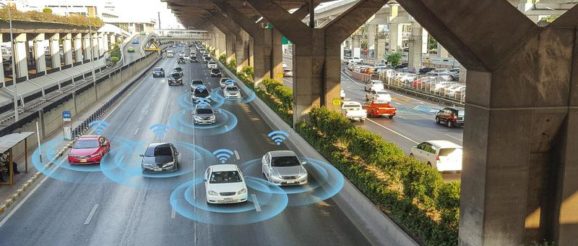Could the UK win the global race for autonomous vehicles? | Emerging tech & innovation | Techworld

A new report from Frost & Sullivan on the global state of connected and autonomous vehicles (CAV) has found that the UK has the greatest mass-market potential for the technology globally.
£500 million has already been invested by the automotive industry, technology companies and the UK government into CAV R&D and testing. The report estimates that continued investment could ultimately translate into a £62 billion annual economic opportunity for the country by 2030 and help to prevent 47,000 serious accidents over the next decade.
In his 2018 budget, Chancellor Phillip Hammond stated that we could we see autonomous vehicles on British roads by 2021. However, some argue that the CAVs that we can expect to see within that time frame, although technically autonomous as defined by the Society of Automotive Engineers (SAE), do not meet the criteria of a fully-autonomous, self-driving vehicle – a so called ‘Level 5’.
All currently available CAVs still require someone to drive the vehicle, even when driver support systems are engaged. However, the vehicles envisioned for UK roads by 2021, although still requiring someone to sit in the driver’s seat, will not require a driver while the support systems are in effect.
These types of vehicles are already being extensively trialled in the US and China, both countries that already boast CAV unicorns. Waymo have been running fully automated, Level 4 vehicle tests on Arizonan streets since 2016; The Alphabet subsidiary has been developing the technology since 2009.
In the UK, car and technology companies have made significant investments into the development of this technology. However, the UK – and Europe in general – has fallen behind the CAV curve.
Why hasn’t the UK realised its autonomous vehicle potential?
The streets of London are unlike those you’ll find in Phoenix, Arizona. In the US city, it hardly ever rains, the roads are built largely at perpendicular angles and there is significant satellite coverage.
London, by contrast, experiences lots of rain and even the occasional snow flurry, the streets were originally built to accommodate horse and carriages, not cars, and there are large parts of the capital that don’t receive satellite coverage.
Outside of London, only 58 percent of roads throughout the UK currently have 4G access, making any trials or wide-spread roll outs near-impossible. Andy Palmer, president and group CEO at Aston Martin Lagonda told attendees at the biannual SMMT conference earlier this year that a “wholesale rollout of this technology without infrastructure or maturity is reckless.”
Brexit is another significant roadblock that many fear will hamper the UK’s CAV development. A number of car manufacturers have already announced the closure of their British based factories, and the ongoing uncertainty around the terms of the UK’s withdrawal have left many automotive companies questioning whether Britain is really where they want to place future investments.
However, it’s not just business practicalities that have dampened the UK’s CAV efforts. From a technological perspective, Jaguar Land Rover has estimated that fully autonomous vehicles will require one billion lines of code in order to be fully operational; a big ask considering there are already an estimated 600,000 tech vacancies in the UK, a figure that is predicted to reach 1 million by 2020.
What does the future look like for British connected and autonomous vehicles?
Although Europe is lagging behind its international peers in this sector, there are a number of companies across the UK that are pushing ahead with autonomous vehicle projects.
Just last month, London based Five.ai started trialling their autonomous vehicles on selected public roads in Bedfordshire, Bromley and Croydon. According to CEO Stan Boland, the vehicles, most of which are supervised with a human safety driver to comply with current legislation, are gathering sensor data “to gain a comprehensive understanding of the road environment and the behaviour of all road users including drivers, cyclists and pedestrians.”
The mobile network O2 has also announced it will activate a 5G network in June of this year to facilitate the testing of driverless cars on the Millbrook proving ground in Bedfordshire. Five.ai, Oxbotica and StreetDrone are all UK companies that currently use the site to test CAVs and while a range of capabilities are already available at the site, the test bed is not expected to be fully operational until late 2019.
Furthermore, whilst the technology might still be in the developmental stages, the UK government has been forward thinking enough to set up a department – the Centre for Connected and Autonomous Vehicles – to develop legislation relating to CAVs and establish testing schemes on motorways and in selected cities. A recent update to the Code of Practice for Automated Vehicle Trialling helps provide further clarity on what is expected of organisations wishing to test autonomous vehicles on UK roads.
The UK government’s ambitions to see Britain at the forefront of the global driverless car industry are admirable but also potentially overreaching. While the large-scale investments, comprehensive legislation and plethora of test centres across the country have certainly put the UK on track to becoming leaders within Europe, without a large-scale infrastructure overhaul, connected and autonomous vehicles will be destined to be the preserve of a select few city dwellers.
